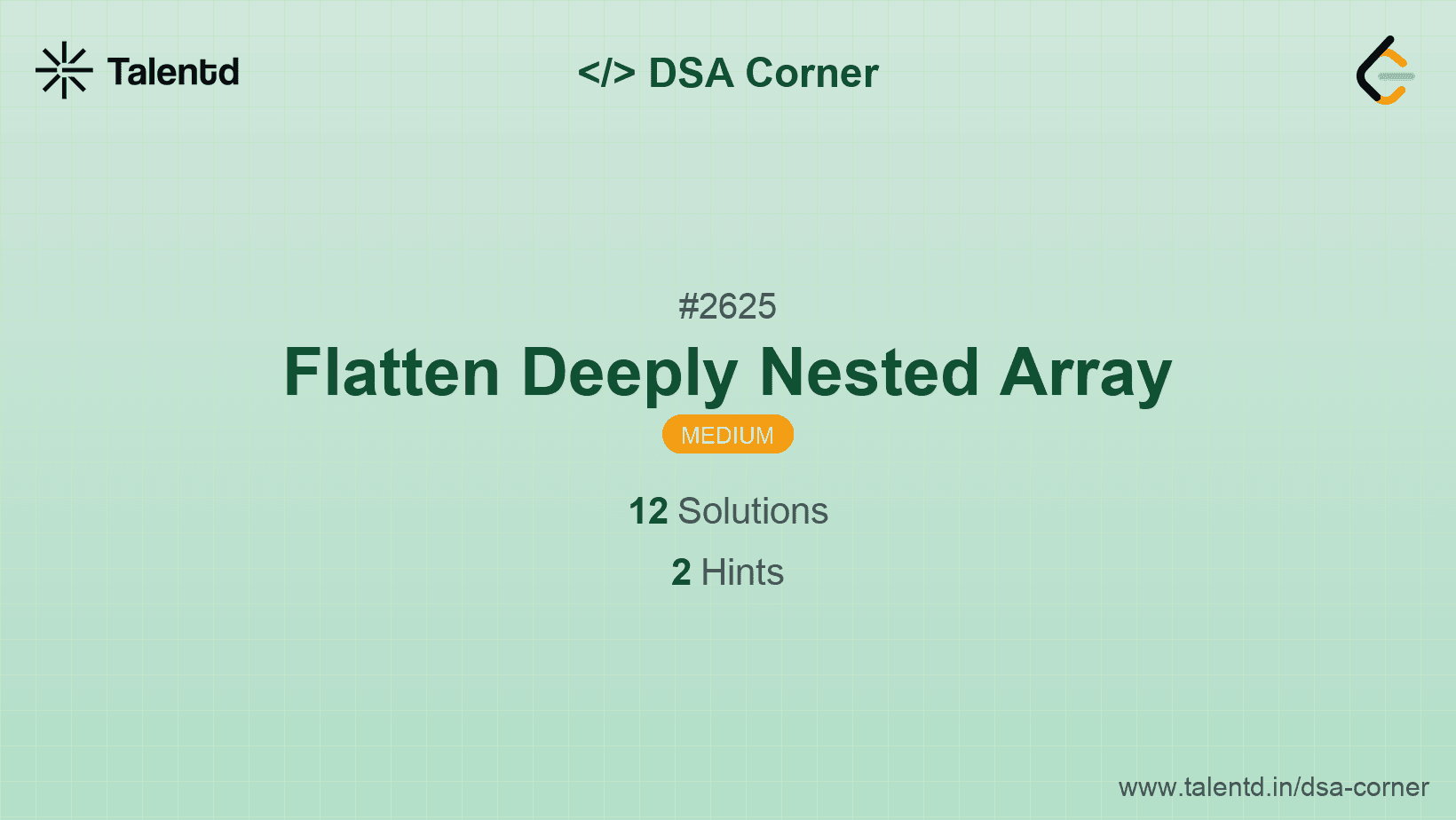
Sponsored
Sponsored
The idea behind this approach is to use recursion to flatten the array up to the specified depth n. If the current depth is less than n, we continue flattening; otherwise, we do not flatten further. We leverage recursive calls to process each element and manage the depth level.
Time Complexity: O(m) where m is the total number of elements in the array considering all levels.
Space Complexity: O(m) due to recursive stack space and storage of flattened elements.
In this JavaScript implementation, recursion is used through the helper function flattenHelper. Arrays and depths are managed with the JavaScript Array.isArray() method, allowing differentiation between arrays and base elements. This recursive design ensures depth handling and efficient element retrieval.
This technique leverages a stack data structure to simulate recursion iteratively. By using an explicit stack, we can iteratively flatten the array, taking control of the depth level without using the actual recursive calls within the stack frames.
Time Complexity: O(m), iterating through each array element.
Space Complexity: O(m) due to storage in stack elements.
1function flattenArray(arr, maxDepth) {
2 const result = [];
3 const stack = [{ arr, index: 0, depth: 0 }];
4
5 while (stack.length > 0) {
6 const { arr: current, index, depth } = stack.pop();
7
8 if (index < current.length) {
9 if (Array.isArray(current[index]) && depth < maxDepth) {
10 stack.push({ arr: current, index: index + 1, depth });
11 stack.push({ arr: current[index], index: 0, depth: depth + 1 });
12 } else {
13 result.push(current[index]);
14 stack.push({ arr: current, index: index + 1, depth });
15 }
16 }
17 }
18
19 return result;
20}
21
22let arr = [1, [2, [3, 4], 5], 6, [7, 8]];
23console.log(flattenArray(arr, 1));JavaScript facilitates iteration through an explicit stack to track array representations and respective depths. The solution dynamically adjusts stack content based on depth, solidly putting down a path for deep handling without recursion.